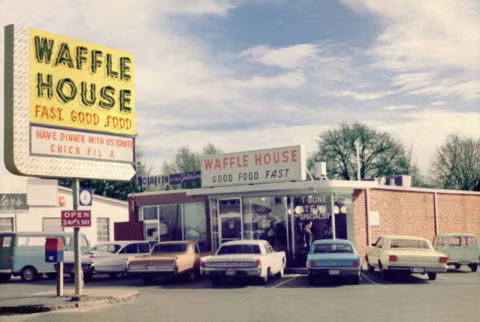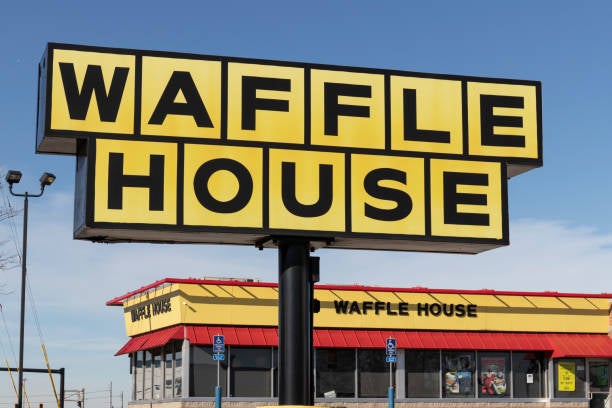North Augusta’s Georgia Avenue contains many spots that are of significant historic and cultural value; however, one spot prominent on the city’s main drag tends to fall under the radar of cultural relevance.
With its iconic yellow and black block-lettered sign out front, the Waffle House on Georgia Avenue, according to the Augusta Museum of History, is the oldest continuously operating location in the brand’s history.
Technically, the Georgia Avenue location is Waffle House number four and was not the first location built.
The first Waffle House, founded by Joe Rogers, Sr. and Tom Forkner in 1955, is now a museum in Avondale Estates, Ga. Meanwhile, locations two and three were closed and the buildings demolished long ago.
According to Country Living, there are more than 2,100 Waffle House locations spread across 25 states, and despite their rabid popularity wherever a location pops up, they remain mostly a Southern “thing.” Fittingly, Georgia has more locations than any other state with more than 132 of those located in the Atlanta area alone.
The chain was founded in 1955 from a chance encounter between Forkner, a real estate agent, and his client, Rogers, who worked for the Tennessee-based Toddle House diner chain. Rogers persuaded his agent, while he was in the midst of purchasing a home from him, that there was a need in the market for a chain that operated 24 hours a day, seven days a week and served up quality fast food with table service.

The chain became an instant hit, and a quick look at history shows that the locations, most of them built right off the exit ramps on interstates and major highways, was no happy accident. To offer a bit of extra convenience, some locations were built across from one another at the same exit, meaning that patrons would not have to turn around, but could choose the location in the direction they were already headed.
As the interstate highway system under the Eisenhower Administration progressed, “greasy spoon” diners popped up almost immediately. Unfortunately for diners, the food and service quality one might expect was a game of chance, and hardly any restaurant out there offered round-the-clock service.
The owners considered themselves to be in the “people” business, not just the food business and created a standardized menu with an emphasis on customer service. The original menu contained only 16 choices.
Before long, Waffle House became popular with shift workers who would stop by to have a cup of hot coffee and enjoy some polite conversation before heading off to work.
Waffle House’s commitment to being open at all times led the Federal Emergency Management Agency (FEMA) to create what is called the “Waffle House Index” as a way to determine the severity of storm damage after a hurricane or other natural disaster strikes. All Waffle House locations are designed to be self-sufficient and can operate in an area that has lost power.
According to FEMA’s guide, Code Green indicates the locations are working normally, while yellow denotes that a limited menu is being served and the location may be experiencing delays due to electricity shortages.
If a location is labeled Code Red, it is closed, indicating the area needs “life or death” attention.
Of course, the popularity of the chain has led the to artists devoting music, some are parodies, but most are honestly singing the praises of being scattered and smothered.
Over 40 years ago, Waffle House Records released its first song on the new label, “Waffle House Family,” and began producing music videos in 2008. The first video, “Bert,” was a homage to the Waffle House short order cook who developed the chain’s popular chili recipe.
One day out of the year, patrons can order the white glove treatment from their favorite “Awful Waffle” establishment. Each year on St. Valentine’s Day, the company takes reservations where they offer linen tablecloths, “scattered” rose petals and candles along with their signature eggs and waffles.
…And that is something you may not have known.
Scott Hudson is the Senior Investigative Reporter, editorialist and weekly columnist for The Augusta Press. Reach him at scott@theaugustapress.com











